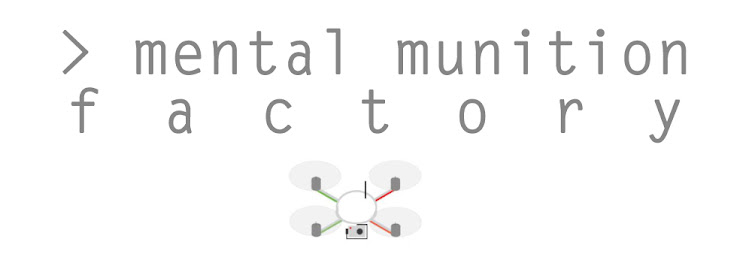Monday, February 13, 2012
Drone journalism over anti-ACTA protests in Estonia
More drone journalism of protests, using hexacopters. These images were captured over a protest against the Anti-Counterfeiting Trade Agreement on Saturday, Feb. 11, in Tartu, Estonia.
According to a post by the hexacopter pilot on DIYDrones.com, these images were streamed directly to the web from the 'copter.
It was cold in Estonia that day; -15 Celsius (5 degrees Fahrenheit). But apparently not too cold for organizers to get protestors "jumping for the camera."
A word on safety, from the pilot Jaan Kronberg:
"Yes I know, it wasn't safest thing in the world to do. Yes I know, many will consider it dangerous and irresponsible. But sometimes you just disregard rules and do something insane.. I wasn't "over the heads" for too long, most of the time behind the stage (you can see it on last screenshot), but ... - yes, I know... But it was special day and I took that risk, that's the only excuse."
Tags:
ACTA
,
anti-ACTA protests
,
citizen journalism
,
drone journalism
,
Estonia
,
hexacopter
,
protests
,
safety
Wednesday, February 8, 2012
New Law Could Have Enormous Impact on Drone Journalism
The Federal Aviation Administration must make way for drones, according to a bill that passed through Congress yesterday.
Now headed to President Obama to become law, the bill requires the FAA to decide on regulations that would permit drones (the official nomenclature is UAS – Unmanned Aerial System) to operate in the same airspace as commercial jets and police helicopters. The order was included in the Reauthorization Act that extended FAA’s funding for another four years, at a cost of $64 billion.
The bill does not make the regulations for the FAA, but instead orders the FAA to make regulations within certain bounds. But it does state that the FAA should create a “a safe, non-exclusionary airspace designation for cooperative manned and unmanned flight operations.”
Now headed to President Obama to become law, the bill requires the FAA to decide on regulations that would permit drones (the official nomenclature is UAS – Unmanned Aerial System) to operate in the same airspace as commercial jets and police helicopters. The order was included in the Reauthorization Act that extended FAA’s funding for another four years, at a cost of $64 billion.
The bill does not make the regulations for the FAA, but instead orders the FAA to make regulations within certain bounds. But it does state that the FAA should create a “a safe, non-exclusionary airspace designation for cooperative manned and unmanned flight operations.”
Tags:
drone journalism
,
drones
,
FAA
,
regulation
,
sUAS
,
UAS
Thursday, January 26, 2012
Images from Drone Causes Federal Investigation
In what is possibly the first major exposé initiated through drone technology, a small unmanned craft captured evidence of environmental contamination in Texas.
sUAS News reported that a Dallas drone enthusiast was testing a drone, named “Exposure,” when he captured images of what appeared to be a polluted creek near a meat packing plant.
“I was looking at images after the flight that showed a blood red creek and was thinking, could this really be what I think it is?” he told sUAS news. “Can you really do that? Surely not.”
 The hobbyist called a Coast Guard 1-800 number, and state environmental investigators reached the creek 40 minutes after the call.
The hobbyist called a Coast Guard 1-800 number, and state environmental investigators reached the creek 40 minutes after the call.The Environmental Protection Agency, and several state environmental authorities, executed a search warrant at the Columbia Packing Company on January 19. A criminal investigation is now underway.
The Fox 4 station in Dallas reported that the plant was still operational during the investigation. Field tests from Texas Parks and Wildlife indicated pig blood and toxic chemicals had been dumped in the plant, according to the Dallas Morning News.
Local news outlets seem to have glossed over the fact that the aerial photos which launched the criminal investigation were taken by a drone, and none seem to have tracked down or interviewed the pilot. Additionally, sUAS News declined to publish the drone pilot’s name, citing concerns about the ongoing investigation.
The pilot’s secrecy may stem from a concern about his own safety and well-being after exposing possible criminal activity (potentially involving persons with power and money). But a commenter in the sUAS story also pointed out that this might also be about the hobbyist protecting his pastime – aerial imagery and drone piloting – from scrutiny and harsh regulation.
The reason for his secrecy may be a combination of both those things, or things yet unpublished. All accounts suggest he was a regular RC pilot, without pretense, who simply stumbled on criminal activity near a Dallas meat packing plant. But this shows exactly what drone journalists are aiming for, and demonstrates what is possible when you combine small, inexpensive airframes with imaging equipment.
Drone journalists, news orgs and nonprofits should make a mental note of this event and learn a thing or two from it. A good way to start a systematic investigative report on the local environment would be to take photos of creeks and tributaries near industrial operations.
Images:
1) Aerial photo of the contaminated creek, ostensibly taken by the drone pilot, as published by DMN in an online photo gallery.
2) The Exposure airframe, which is capable of carrying a DSLR camera.
Tags:
citizen journalism
,
drone
,
drone journalism
Subscribe to:
Posts
(
Atom
)




